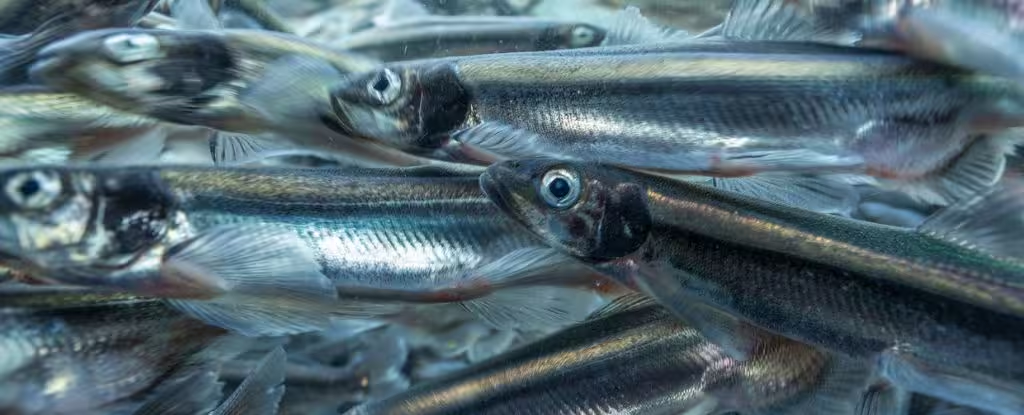In just a few hours, a flock of more than 10 million capelin was eaten by cod off the coast of Norway; This incident is believed to be the largest predator kill ever recorded. According to researchers from the Massachusetts Institute of Technology (MIT) in the United States and the Institute of Marine Research in Norway, it was the dense accumulation of fish that attracted predators.
“This is the first time we’re seeing a predator-prey interaction on a large scale, and it’s a constant struggle for survival,” says MIT oceanographer Nicholas Makris.
Makris, along with MIT engineers Shurav Pednekar and Akita Jain and Marine Research Institute behavioral ecologist Olav Rune Gode, observed the dynamics of this large-scale event by tracking the echoes of sound waves from the animals’ swim bladders.
The team used a new large-scale multispectral underwater acoustic sounding technique to monitor the characteristic frequencies of different species; This allowed researchers to track their interactions over an area of tens of kilometers.
“Cod has a large swim bladder with low resonance, like Big Ben,” explains Markris. “Whereas capelin have little swim bladders that resonate like the highest notes on a piano.”
Capelin (Mallotus villosus) gather in large flocks to save energy during their migration from the Arctic to Europe each February. This drifting behavior allows them to ride each other’s currents and move collectively.
“If they are close enough together, they can sense the average speed and direction of other fish they sense around them and then form a large, cohesive school,” Markris explains.
Recently analyzed data for 2014 recorded up to 23 million capelin individuals uniting in flocks. In response, 2.5 million predatory Atlantic cod (Gadus morhua) organized themselves in their own schools and prepared for the feast.
“This is happening on a terrifying scale, and we’re watching a wave of capelin rise like a wave around a sports stadium, and it’s as if they’re coming together to form a defense,” explains Makris.
“The same thing happens with predators that come together to attack in a coordinated manner.”
Fortunately, anchovy-sized capelin numbered in the billions, meaning the event the team recorded would have wiped out at most 0.2 percent of the population. But understanding predator-prey dynamics becomes more important as the number of large scavenger fish species declines.
A staggering 97 percent of migratory fish species, including high-value species like Atlantic salmon, are at risk of extinction. The sonic imaging used by Pednekar and his colleagues could help researchers detect fish species on the brink of extinction.
“In our study, we find that catastrophic predation events can shift the local predator-prey balance within a matter of hours,” explains Makris.
“This is not a problem for a healthy population with geographically dispersed population centers or ecological hotspots. But as these hotspots decline due to climate and anthropogenic pressures, the natural ‘catastrophic’ predation events we are witnessing for keystone species are increasing for those species and their dependants.” “It could have dramatic consequences for many species.”
The team used similar techniques to study the dynamics of a cod population that was currently in decline. They found that if populations fall below the average number of individuals in a herd, it becomes much more difficult for them to recover. Their research has been published at: Nature Communication Biologisty.
Source: Port Altele
